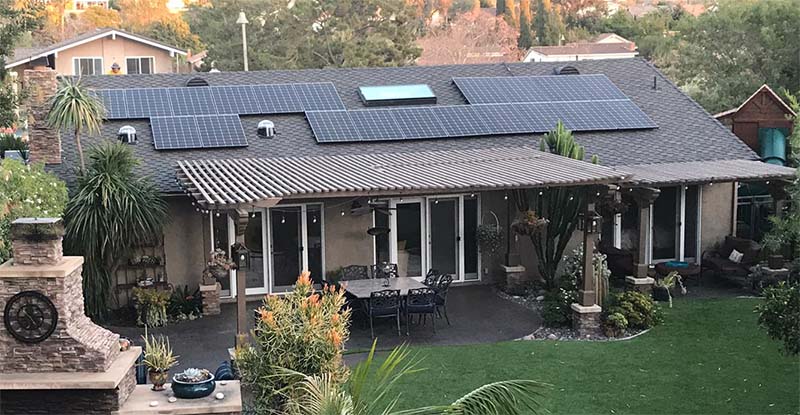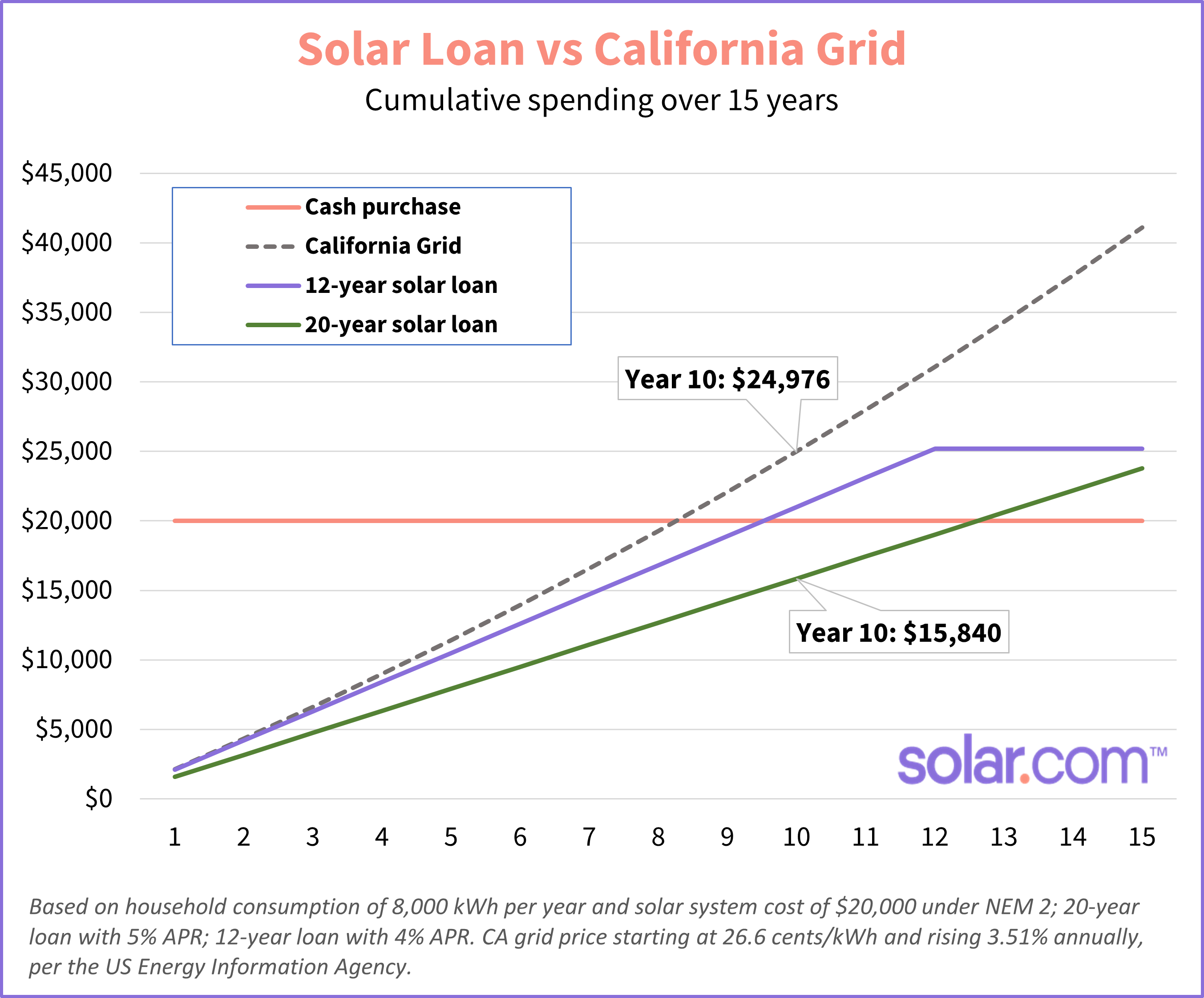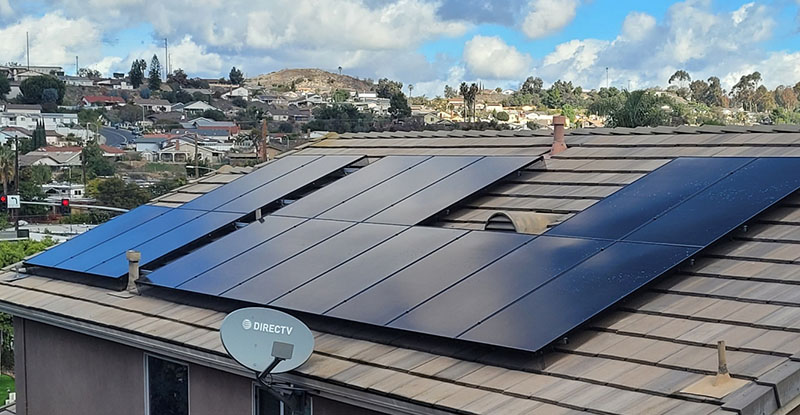
For many homeowners, solar panels are a long-term investment in energy cost savings. On average, it takes between 7-10 years to break-even, leaving decades to accumulate savings.
But what if you’re not sure if you’ll be in your home for 7-10 years?
Going solar in your golden years can be daunting, but it can also be a way to free up fixed income, increase your home value, and add to your legacy.
In this article, we’ll explore the benefits and road bumps of going solar later in life, and recount the experience of retired NASA scientist Lenny Pfister, who recently went solar at 72 years young.
Is it worth going solar in your 70’s?
For most homeowners, the measure of whether it’s “worth it” to go solar is how much money they will save in electricity costs. That’s especially true for retired homeowners living on fixed income.
Rising electricity prices pose a serious problem to people living on fixed income. Typically, the cost of electricity rises 3-5% per year. However, in October 2022, the average US electricity price increased nearly 17% year-over-year – the largest one-year increase since 1981.
Here’s how this one-year increase translates into monthly costs:
| Electricity source | Rate in September 2021 (cents/kWh) | Cost per month in 2021 (833 kWh) | Rate in September 2022 (cents/kWh) | Cost per month in 2022 (833 kWh) | Year-over-year bill change |
| Grid – US average | 14.14 | $118 | 16.32 | $136 | $18 |
| Grid – California | 23.49 | $196 | 26.6 | $221 | $25 |
| Grid – New York State | 20.66 | $172 | 23.97 | $200 | $28 |
| Grid – Florida | 12.34 | $103 | 14.59 | $122 | $19 |
Based on grid electricity prices and average monthly consumption figures from the US Energy Information Agency.
Over the course of a year, this adds up to an extra $216-336. Younger homeowners still in the workforce may be able to keep up as their income increases, but that’s typically not an option for retirees and older adults.
It’s also worth mentioning that utility bills vary from month-to-month, which can make it very hard to budget a fixed income
Going solar is a way of locking in a lower, fixed monthly payment for your electricity. In fact, designing a system to your needs and selecting a financing option puts you control of price you pay for electricity — not the utility.
Related reading: The Pros and Cons of Going Solar
“I better have solar because electricity is very expensive”
Rising electricity prices is what drove Lenny Pfister, a retired NASA scientist of over 40 years, to put a solar system on his home at the age of 72.
Pfister said the 1960’s homes in his area of Northern California historically haven’t had air conditioning. However, living standards have changed and so has the climate, bringing more instances of hot weather.
“So, I decided to get AC and, I thought, ‘If I really want to go green, I should be using electric heat with a heat pump, too,’” Pfister said. “So, I knew my electricity usage would increase. And if I’m going to do that at a reasonable rate, I better have solar because electricity is very expensive in this state.”
Pfister was also motivated by the changing net metering policy in California, know as NEM 3.0, which will be less favorable to solar owners in the future. Learn more about the new policy here and how to be grandfathered into the current one here.
What about solar scams?
We will be the first to admit that the solar industry is plagued with scams and sleazy installers. And to be frank, those dirty rascals tend to target older homeowners.
So how can you tell a reputable installer from a scam?
Well, Electrum – the parent company of Solar.com – was founded for the exact purpose of weeding out scammy solar companies. We rigorously vet installers before allowing them to join our network and won’t even consider them if they don’t have:
- Certification and insurance
- 3+ years of experience
- Solid financial standing
- An excellent track record of customer experience
This not only takes power away from scammers; it fosters healthy competition between local installers that leads to savings for homeowners.
But don’t just take our word for it.
“It’s reasonable to go through a company like yours,” Pfister said. “I was referred to Electrum by my utility because you do vet the solar companies in some way. It’s actually competitive because I got a bid from someone else outside the system and you actually had better than the price.”
When will my solar savings kick in?
Going solar is a way of reducing and stabilizing your monthly electricity costs. Exactly when and how much you save by going solar largely depends on how you choose to finance your system.
There are two main ways to finance a solar system: Cash or solar loan.
Paying in cash maximizes your long-term savings, as you spend less money on interest and loan fees. But taking out a solar loan can lead to quicker – often instant – savings, as shown below in a chart for a typical California homeowner’s option.

All three solar financing options provide savings, but at different times.
Here are the takeaways:
- A 20-year loan can provide instant savings as the monthly payments are often lower than the monthly electricity bills they replace. However, longer loans tend to accumlate more interest
- The payments on a 12-year loan may not be lower than utility payments right off the bat. However, after a few years of utility rate increases, they become the path to energy cost savings
- A cash purchase requires the largest upfront investment, but it is most cost-effective option in the long run
So, the big question becomes: “How long do you plan on being in your house?”
If the answer is less than 10 years, a longer solar loan is usually best to free up fixed income right away.
If it’s more than 10 years, a shorter loan or a cash purchase can increase your total savings over the life of the solar system.
Now, you’re probably thinking, “What if I leave my house before my solar loan is paid off or before I see a return on investment for a cash purchase?”
Wonderful question — let’s dive in!
What if I move before my solar system is paid off?
Given solar panels are typically warrantied for 25 years and last much longer, it’s very common for older homeowners to leave their house before their system is paid off or they see a return on investment.
This is something Lenny Pfister pondered while exploring his solar options.
“I did wonder how long I’m going to be in the house,” Pfister said. “I figure I’ll be in the house probably for 5-10 years. I can get pretty close to paying it back and I’m guessing that it adds some value to your home.”
As a matter of fact, Pfister was correct about added home value. Studies by Zillow and the Lawrence Berkeley National Laboratory have shown that solar panels increase your home value by around 4.1% or $4,000 per kW of capacity installed (depending on who you ask). Solar panels can also help your home sell faster, as today’s buyers value energy efficiency and green home features.
So, if you need to sell your home before your solar system is paid off, the buyer essentially pays for it in the sale – just like they would an air conditioner, furnace, and the house itself!
Then, you can use the additional proceeds from the home sale to pay off your solar loan, and the solar system stays with the new owners to help them reduce their energy costs.
Added home value allows you to enjoy the instant savings of a long-term solar loan without the worry of making payments for 15, 20, or even 25 years.
Leaving a legacy
In addition to energy cost savings, there is another major reason to go solar: To try to leave the world in better shape than you found it.
Pfister said his decision to go solar was about 50% financial and 50% environmental.
“For what it’s worth, the science that I was studying at NASA was Earth science,” Pfister said. “I just figured it was time to (go solar), and I had the money to do it. It’s basically that I tried to put my money where my mouth was.”
In the last few decades, solar has emerged among the cleanest and cheapest energy sources, with the added bonus that it’s accessible by the general public. Rooftop solar is especially unique because it requires zero extra land use and can help create a more resilient and affordable electricity grid for everyone – especially when paired with battery storage.
In other words, a home solar system (and the energy cost savings it provides) is the perfect gift to leave behind for future generations that will face the most severe consequences of climate change.
Going solar with Electrum and solar.com
The beauty of going solar is it gives you control over your monthly electricity costs, which is especially valuable for older homeowners on fixed income.
Even if you don’t live in your house long enough to pay off the system, most homeowners recoup the cost of the system through added home value when they sell.
Finally, rooftop solar is a clean, cheap energy source and the perfect gift to leave behind for future generations.
Connect with an Energy Advisor to learn more and compare multiple quotes from vetted installers.



